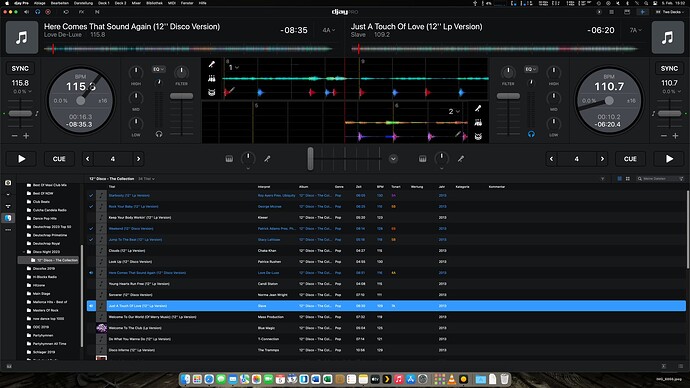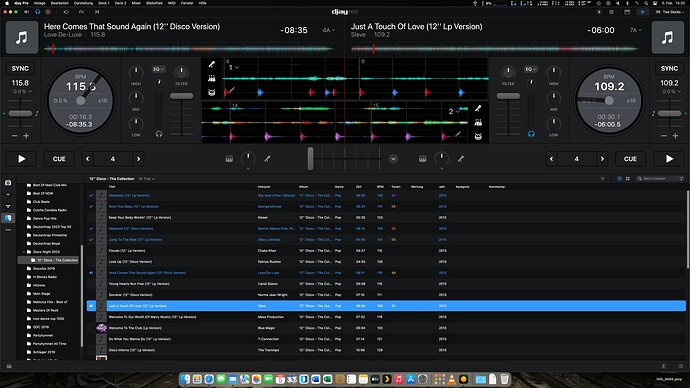Hello 
How do you deal with the problem if this affects thousands of tracks in your library?
I do the analysis manually. I used to think that analysis by software is a cool idea and I used both Serato and Mixed in Key, then I came to the conclusion that no software will give “correct” results in all cases, music is simply often too complex for an analysis that assigns one musical key to an entire track or piece … things may change, things may not be as unambiguous as we could wish for, and finally there is quite some subjectivity involved here. Now I use only Engine DJ and either my piano or a keyboard synth to play along each track to identify the scale - yes, this takes a lot of time, but I consider this a revealing activity.
In case that you do not have keyboard, you can use a virtual keyboard, like this one:
In the case of the Udo Jürgens song, I checked two videos, one seems to be the original version:
After the intro, the verse begins with its harmonic center on C with notes from the C major chord. Playing the C major scale throughout the verse sounds very compatible, so I would say that this is quite clearly C major or 8B on the Camelot Wheel. Here are the chords that I heard:
- C major: Ein Tag wie jeder …
- A minor: Ich träum’ von Liiiebe

 …
…
- F major: … doch eben …
- G major: … nur ein…
- E minor: Traum …
And if you take apart each of the chords and the melody of the vocals, all the notes are from the C major scale - which is the same set of notes as the A minor scale, 8A. And maybe that is the reason why PKtheDJ’s app says that it might be 8A … However, if you get a result with an ‘A’, which denotes a minor scale, and the song or track sounds really happy, look at the corresponding key with a ‘B’ on the Camelot Wheel, that may well be a better result.
My guess is, that the software will try to find and identify the notes which are present in the piece to rule out some scales, it may try to identify the harmonic center and decide on one result - but there is quite some subjectivity involved here, as is evident from various discussions online or elsewhere about the key of a given song or track. For us as DJs it may not matter so much, what key the composer actually had in mind, as long as our mix sounds cool.
Let’s look at the song again, because it demonstrates nicely how complicated things can get. After the verse in C major, comes the chorus “17 Jahr’, … blondes Haar…” and I would say it begins with an A major chord, followed by a F# minor chord … then comes another verse “Sie hat mich angelacht …”, which begins with a D♭ major chord melody, … as catchy as the song may sound, it has quite some variation in my opinion. What would I assign here? Probably 8B or C major, because of the first verse and because the intro seems to begin with a C major chord as well. Would I mix this somehow harmonically in a way that takes all the changes into account?  No, I do not have such mad DJ skillz
No, I do not have such mad DJ skillz  …
…
Often I have a track open in the software and I listen to it and I listen some more and more, and I still cannot find or decide on a key. Often Engine DJ is helpful here, it is like my good friend who offers an opinion, often I agree with it. Some tracks are weird, the harmonic center may not be the expected note from the scale, and modern techno uses more keys than just major and minor keys. Especially acid tracks often have some psychedelic squelchy strangeness in the 303 sequences that corresponds more to a Phrygian scale. Deviating from traditional patterns is one of the aspects that make techno so exciting, new sonic territory and spaces, adventure … here be dragons!
Do I get faster? During the past weeks and months I got quite some practice. So, yes, I get faster, but it still takes some time. I think that as a DJ I should at least listen to each track once, at least to check if the file is ok. Adjusting beat grids takes time too, especially when it is music from a band, a drummer is not a drum machine, small deviations in the tempo will prevent to grid to align perfectly.
The reward of taking the slow route, at least for me, is a deeper understanding of the music and the way tracks are structured, aural training (I do not have perfect pitch), and analysed tracks that mix nicely. I may not analyse thousands of tracks in one go, and it is important to take breaks too, but I am not in a hurry.  I actually enjoy analysing tracks. I hope this helps you a little on your own journey!
I actually enjoy analysing tracks. I hope this helps you a little on your own journey!
Viele Grüße aus dem Feenwald! 



